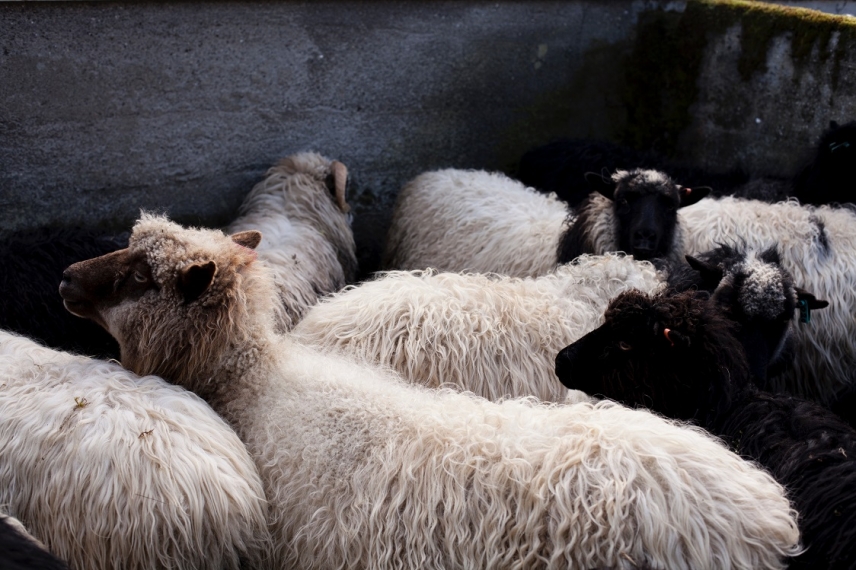 Researchers Amparo Martínez, Vicenzo Landi and Juan Vicente Delgado in partnership with the Autonomous University of Barcelona and several breeders associations have analyzed RNA, which is responsible for translating information written in DNA to proteins, in 5 indigenous Spanish meat breeds that are very distant in the evolutionary chain: Canaria de Pelo, Roja Mallorquina, Gallega, Xisqueta and Ripollesa.
Researchers Amparo Martínez, Vicenzo Landi and Juan Vicente Delgado in partnership with the Autonomous University of Barcelona and several breeders associations have analyzed RNA, which is responsible for translating information written in DNA to proteins, in 5 indigenous Spanish meat breeds that are very distant in the evolutionary chain: Canaria de Pelo, Roja Mallorquina, Gallega, Xisqueta and Ripollesa.
Using samples from the longissimus dorsi muscle, situated on the sheep’s back and generally used to assess the quality of the meat, the RNA from 50 sheep divided into 5 pools has been sequenced, with 10 sheep of each breed.
This descriptive study reveals a significant genetic difference among the 5 studied breeds, but it also reveals that about 72% of the polymorphisms (variations of one individual to another) found using the reference genome that all these kinds of studies use for comparison purposes are shared by at least 2 of the analyzed groups and that 10% are in the 5 analyzed groups. In fact, at a general level, they all share a greater expression of the genes related to muscular activity.
Therefore, the research group found great similarity in the genetic expression of the studied breeds. The logic behind this result is supported by several precepts: all the breeds being researched are meat breeds and have a common ancestry, keeping in mind that there is just one point of sheep domestication from which later migrations spread to different geographical points around the planet.
Despite the differences shared by the five groups, it must also be said that there is quite a wide range of signature (not shared) polymorphisms in each group, which allows for leeway once scientists are able to characterize these differences and establish marker panels that help breeders choose the genome of the breed they are going to raise, ensuring better production by means of early planning. Ultimately, this means choosing the breed that will grow fastest and best in the same external conditions.
From description to association
In pursuit of the most productive sheep breed, this descriptive study analyzed DNA in the early stages. In the second stage, it was necessary to demonstrate that SNPs (Single-nucleotide polymorphisms), the polymorphic markers used, are actually associated with better animal characteristics.
Therefore, to complete the cycle it is necessary to carry out association studies in which how these polymorphisms are translated into animal characteristics can be verified by means of phenotypic data like animal weight, data on growth and other morphological data. Once the foundations of each breed’s genome can be revealed, all that will remain to be seen will be how they are expressed in real time.
Noce, A; Cardoso, TF; Manunza, A; Martínez, A; Canovas, A; Pons, A; Bermejo, LA; Landi, V; Sanchez, A; Jordana, J; Delgado, JV; Adan, S; Capote, J; Vidal, O; Pazzola, M; Vacca, GM;Casellas, J; Amills, M. Expression patterns and genetic variation of the ovine skeletal muscle transcriptome of sheep from five Spanish meat breeds. Scientific Reportsvolume 8, Article number: 10486 (2018) | DOI: 10.1038/s41598-018-28760-9


